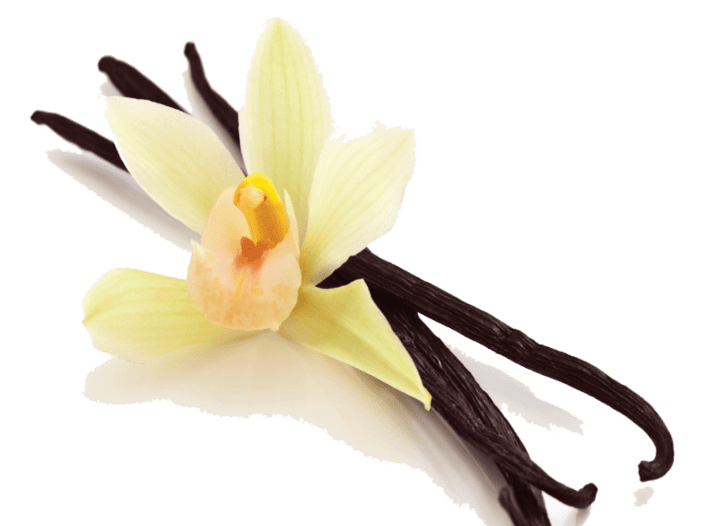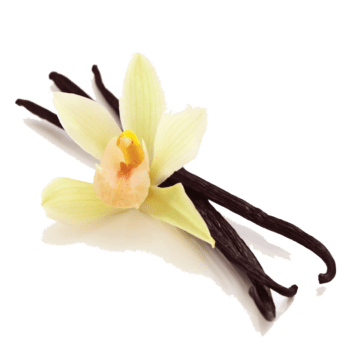
The Mysterious Realm of Vanilla
When you think of vanilla, what do you think of? Is it Ice Cream? Flowers? Candles?
If you said flowers, you are correct. You see, vanilla is a flavoring that comes from an orchid genus called Vanilla. Its actually derived from the Spanish word Vaina which is simply translated into “little pod.” It originally came from the early Mesoamerican period, which included parts of modern day Mexico & Guatemala.
According to popular belief, the Totonac people, who lived in the east coast of Mexico in the present day Veracruz, were the first to cultivate or harvest vanilla. According to the Totonac mythology, the tropical orchid was born when Princess Xanat, forbidden by her father from marrying a mortal, fled to the forest to be with her true love. In the end, the lovers were caught and beheaded. Where their blood touched the ground, the vine of the plant started to grow.
Vanilla is a vine like plant that grows up trees, or poles and can grow up to 30 feet long. The most popular orchid used to produce vanilla today is Vanilla planifolia, or flat-leaved vanilla. This is the only orchid that is used for industrial food production. The part of the plant that is used is the pod or the bean. These beans or pods are picked prior to them becoming ripe and placed into hot water, laid out to dry, and conditioned for anywhere from 2-6 months. It is a 6 part process.
Once the process is complete, next comes grading. The vanilla fruits or pods, are sorted by quality and graded. Each country that produces vanilla has its own grading system. In general vanilla fruit grade is based on length, appearance, and moisture content of the fruit. Whole, dark, plump and oily pods that are visually attractive, with no blemishes and have higher moisture content get graded higher than the rest. Beans that show signs of blemishes, disease, or other physical defects are cut to remove the blemishes. These smaller parts are called “cuts” and are assigned lower grades. The lower graded fruits are what make up your extracts and fragrance oils.
However, vanilla beans or pods, can be expensive, scraping them will produce the potent vanilla flavor and the black specs will color what ever you are baking. Worth the money if you can afford it.

Another way to get your hands on some vanilla is through extracts, essential oils and fragrance oils. Vanilla extract comes from softening the vanilla beans and mixing them with water and alcohol. Extracts are the most commonly purchased form of vanilla.
Next is essential oils. With vanilla being so popular in the food and beverage industry, medicinal studies have been done on the essential oils, and have found several health benefits from these essential oils. For example, Vanilla essential oils contain antioxidants. This property of the essential oil neutralizes free radicals (which is what we are surrounded by every day also known as oxidation) and protects the body against ware and tear, infections and some forms of cancer, such as prostate and colon. It also helps repair damage already done to the body and stimulates repair. Another benefit of the vanilla essential oils it can also act as a sedative. The essential oil soothes the body in countless ways, it can help lower blood pressure, it reduces high fever and inflammation, soothes inflammation of the organ systems of your body, induces sleep, and helps regulate menstrual cycles. Before jumping into using essential oils, you should always consult your health care physician or specialist prior to use.
Lastly, fragrance oils. Although there are no health benefits for this kind of oil, most of the fragrances you see out on the market that are vanilla scented are synthetically manufactured. Now, I know most people shy away from oils made up in a lab. However, over the years, science has allowed these fragrance manufacturers to make these oils as safe as possible. Most fragrance oils used in lotions, soaps, and candles all contain harmful chemicals, parabens and phthalates (a nasty preservative). With today’s standards, these companies are now able to produce these fragrance oils that do not contain any of the harmful stuff. You just have to make sure you do your homework and fact check. These fragrance oils are used in a wide spread of products, including candles. Who doesn’t like to walk into a room that smells like fresh vanilla. It works very well in soy wax. Soy wax has a 9% scent lock, so you can really load up the candle up with fragrance and not have it overwhelm the room.

Vanilla is definitely a fickle flower as it can only grow in areas that are 10-20 degrees north and south of the equator. Most of our vanilla today comes from Madagascar and the island of Reunion. This type of vanilla plant is known as Bourbon Vanilla, named for the Island Reunion, which formally was known as Île Bourbon.
The rest of the world’s vanilla crop comes from Mexico and Tahiti. This kind of vanilla is much harder to get a hold of. Mexican Vanilla is supposed to be smoother, darker, and richer than the vanilla from Madagascar and Tahiti.
Vanilla is the 2nd most expensive spice after saffron. Like saffron, harvesting vanilla is very labor intensive. In order for the plant to produce the pods or beans, they plant must be pollinated by hummingbirds or a specific species of bees native to Central America. Vanilla flowers are only open for a short period of time. So, to produce this commercially, these plants need to be hand pollinated. Once they figured out how to quickly pollinate these flowers by hand, the pods began to thrive. Currently, Indonesia is responsible to the vast majority or the world’s Bourbon Vanilla and 58% of the world total vanilla fruit production.

Leave a Reply